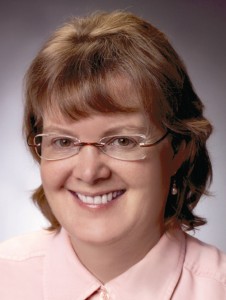
Deborah Peacock of Peacock Myers P.C.
Consumer reliance on Kleenex as the colloquial term for all facial tissues and Fiberglas the generic term for glass fiber insulation is an asset of incalculable value to the manufacturers of both products because Kleenex and Fiberglas came to be seen as the very incarnation of their respective products, rather than specific brands. To continue in this vein, the makers of both protect these names with trademarks to distinguish them from imitators.
Anyone with a product that could set a standard in its class in commerce should consider obtaining trademark protection. Before proceeding further, she should consult a qualified attorney or legal expert.
A name with value
Trademarks and service marks are symbols, words, phrases, names and sounds that distinguish one manufacturer’s goods and services from those of a rival. Some familiar trademarks are the golden arches of McDonald’s, the chimes of NBC and the color pink for Owens-Corning Fiberglas. Anyone who uses one of these trademarked features on their goods or services in a way that is “confusingly similar” to the originator’s trademarked feature or product is infringing on the originator’s trademark rights.
To avoid such problems, innovators should search existing trademarks and trade names for those that might be confused with the mark or name they are considering for a trademark or company name. Trademarks can be searched in a cursory manner at the U.S. Patent and Trademark office website found at www.uspto.gov.
How to register
Trademarks should be registered with the federal government, which gives the trademark holder rights throughout the United States and the right to use the ® symbol. An innovator can use TM or SM on marks he considers proprietary, even if he hasn’t applied for the trademark or service mark. Ordinarily, the creator must have used a trademark in the marketplace before he acquires rights to it.
Federal trademark registration applications require a $350 filing fee for each class of goods and services being registered. The U.S. Patent and Trademark Office then searches for confusingly similar marks and examines the application for other irregularities. This can take 18 months to two years. Federal registrations last for 10 years, but an affidavit of continued use must be filed in the fifth year. Registrations are renewable. Information is available from the Commissioner of Trademarks, Washington, D.C. 20231; (703) 308-HELP.
One can also register a trademark in New Mexico for protection limited to the state. A federal registration supersedes any state registration, so a federal search is required even if a developer intends to use or register the mark only in New Mexico. Forms are available from the Office of the Secretary of State, Executive Legislative Building, Santa Fe, New Mexico 87503; (505) 827-3600.
A trademark can also be registered for global protection. The U.S. recently joined the Madrid Protocol, an international treaty that permits filings in a several countries simultaneously. Or trademark filings can be made in individual foreign countries and certain groups of countries (e.g., the European Community).
This article was written on behalf of Coronado Ventures Forum, which provides educational and networking opportunities for entrepreneurs and professional investors. Learn more about Coronado Ventures Forum.
Article 120
